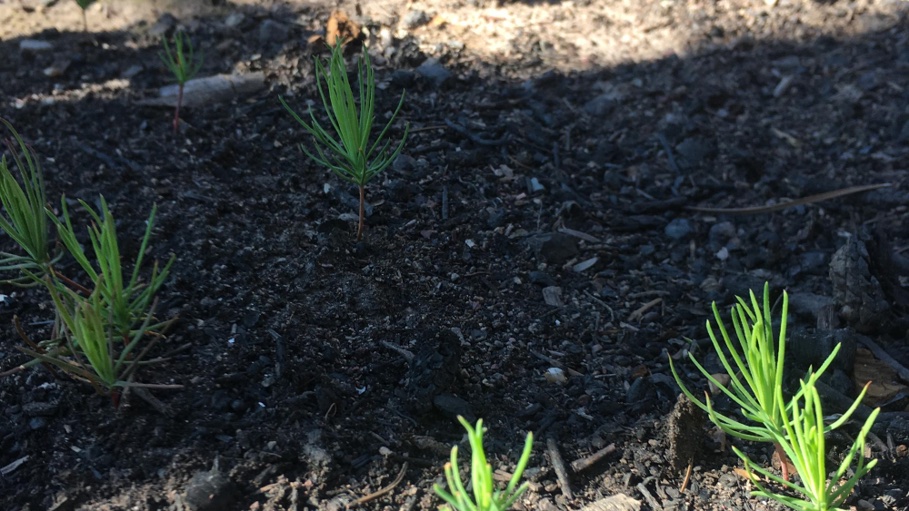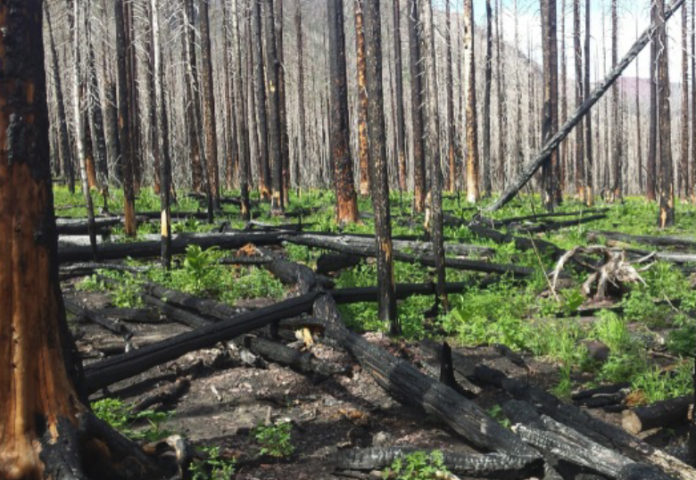LETHBRIDGE, AB. – A new study shows burning soil biomass in the Kenow Wildfire four years ago led to large amounts of carbon dioxide being released into the atmosphere.
University of Lethbridge undergraduate student Sam Gerrand focused on quantifying the loss of CO2 from soil and trees in a 300 metre area that burned in Waterton Lakes National Park almost four years ago.
In the area he studied, each hectare of soil lost carbon equal to the annual emissions of between 33 and 53 cars.
“Trees store carbon when they grow, and many studies have looked at how much carbon is lost after fires because that is all part of the cycle of carbon and a contributor to climate change,” says Gerrand. “As fires burn, they don’t just burn the grasses, shrubs and trees, they also burn into the ground, and there haven’t been many studies focused on the carbon lost from the soil, and especially in montane environments like we have in Waterton.”
The Kenow Wildfire burned roughly 35,000 hectares of land, more than 19,000 in the park alone, in September 2017.
Gerrand found that carbon loss from the soil in their test area was significant, amounting to 40-45% of that lost from the trees that were burned.





